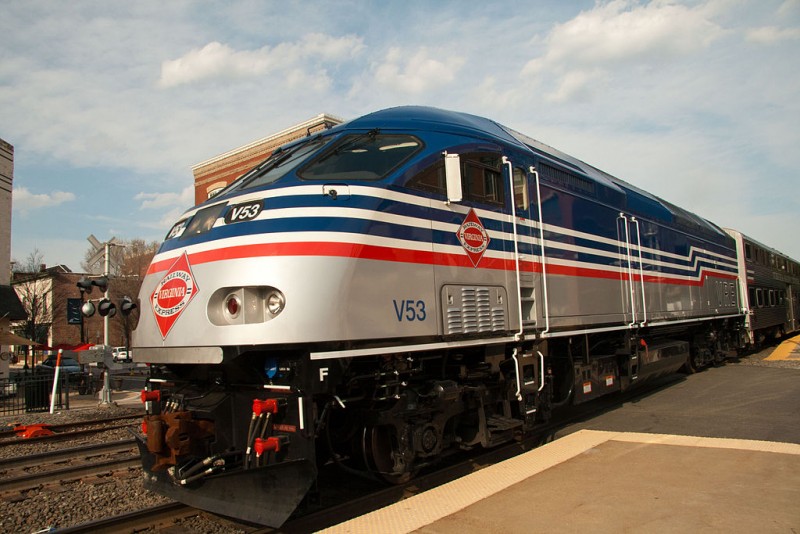VRE had plans to expand, but now it’s scaling them back

Image by jpmueller99 licensed under Creative Commons.
In 2014, the Virginia Railway Express adopted a plan with goals for providing a certain amount of rail service by 2040. The agency is now proposing a scaled-back version of those goals that would have trains running less frequently.
Right now, VRE’s two lines,the Manassas and Fredericksburg lines (which start in Broad Run and Spotsylvania, respectively) only run in one direction: into DC during morning rush hour, and out of DC in the evenings. The VRE System Plan for 2040 included the goal to run both in both directions during both the morning and evenings.
VRE's two routes, the Manassas and Fredericksburg lines. Image by VRE.
The plan said that trains going with the flow of traffic might run up to every 15 minutes during peak hours, and those running against it could go every half hour. Off-peak reverse service would run every hour, which is up from the current status of zero service outside of rush hour.
Now, VRE staff want to “right-size” the System Plan by cutting peak service frequencies from 15 to 20 minutes, cutting reverse peak service instead from running every 30 to every 60 minutes, and allowing off-peak reverse service to drop from running every hour to every two hours.
VRE's proposal to scale back service doesn't directly change any of the system's plans for expansion, but it might have an impact. The Long Bridge replacement project is still going ahead through the planning process. But the proposal to scale back eventual 2040 service could cut VRE's number of train slots needed across the bridge from 92 back to 64, which might make negotiations with CSX (who owns the bridge) easier, or potentially impact whether planners think they need three or four tracks.
Tom Hickey, the VRE staff member who presented the new proposal to the board last month, said that the agency did not expect a large drop in ridership with the proposed changes: “it is assumed there is enough elasticity in off-peak service that will result in basically the same number of riders.” In other words, VRE isn't doing this because of budget constraints, or at least that's not the public reason. The agency seems to think it can simply get the same ridership with less investment.
But cutting service back from one train per hour to one every two makes VRE service less reliable, which means people will have more of a reason to get into a car instead of taking public transit. While 2040 is still a long ways away, it’s important to have challenging but achievable goals to reach for. Any transit agency, VRE, MARC, or WMATA, should be striving for increased, more reliable service that keeps up with their region’s population.
Cutting back rigorous goals that would encourage additional transit ridership is not moving in the right direction.
VRE staff will present a more-formal 2040 modification proposal with financial details at the Board meeting in the fall.
